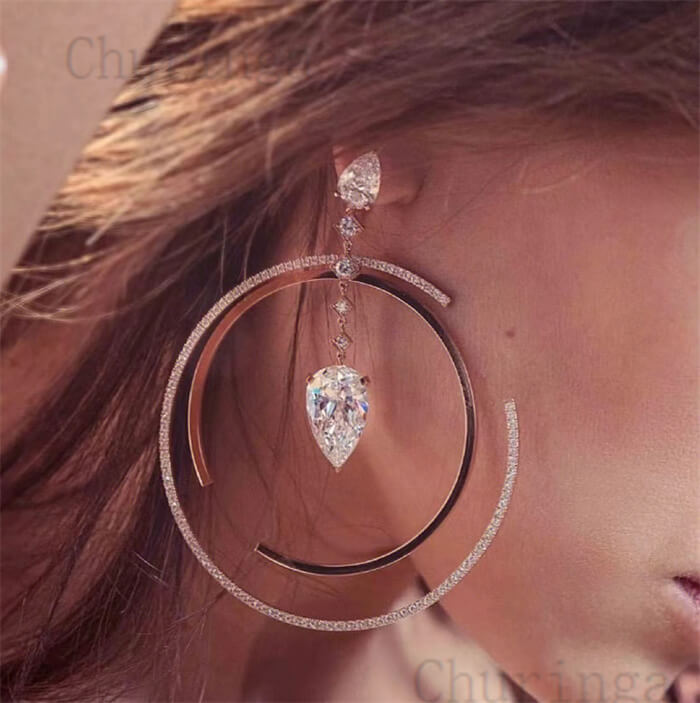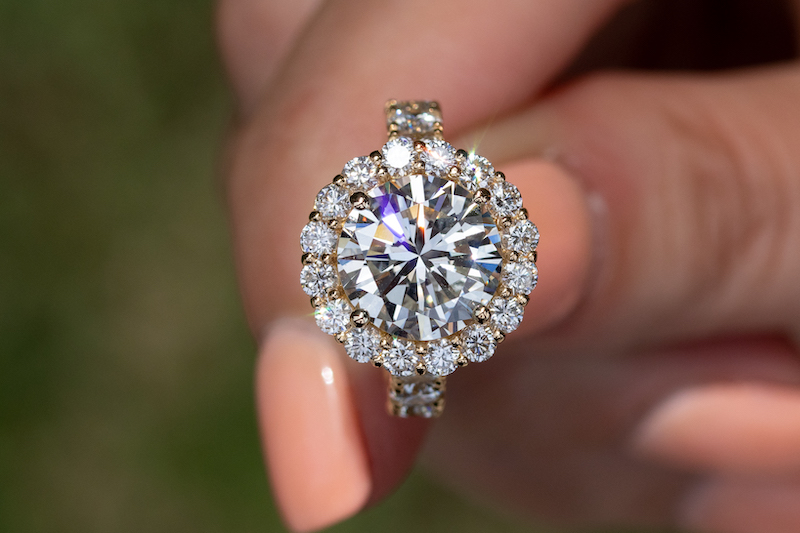
When it comes to an engagement ring or a signature piece of jewelry, we want to stand out. We want something that will represent our personality and relationship. It also needs to be something that will stand the test of time. Especially for a wedding ring which we will wear day in and day out.
This is why some choose a more classic and understated style. The piece of jewelry should create a put-together look, but it also doesn’t distract the eye away from the outfit either. Some want something stunning and truly unique.
Gemstone Cuts
One thing many people don’t realize is just how many different shapes and cuts gemstones can take. There are classic, traditional shapes. And there are truly one-of-a-kind unique shapes that are unlike anything you can find elsewhere.
Stones like diamonds, being as hard as they are, can be cut into pretty much any shape. Different cuts and shapes may not be suitable for all gemstones, which are softer than diamonds. This will limit the number of shapes and cuts a stone can handle.
We will use diamonds as our example for the purposes of this guide. It is the sharpest stone on Earth and can take all the cuts. The cut refers to the finished shape of the face of the stone. Cuts can also refer to the facets of the stone and how they are arranged.
A faceter has more options when it comes to style. They can combine different shapes and faceting styles to create a truly unique style of gem. The most common example cutting and faceting experts give is the round brilliant diamond. For this example, round refers to the shape of the finished stone. Brilliant is the cutting style that brings out the gleam and shine of the diamond.
Let’s take a look at some of the most common and less than common types of shapes and facets. The most common or basic are brilliant, step, and mixed cuts. There are tons of different facets and combinations thereof that are used to create other styles and shapes, which we will also look at.
Brilliant Cut
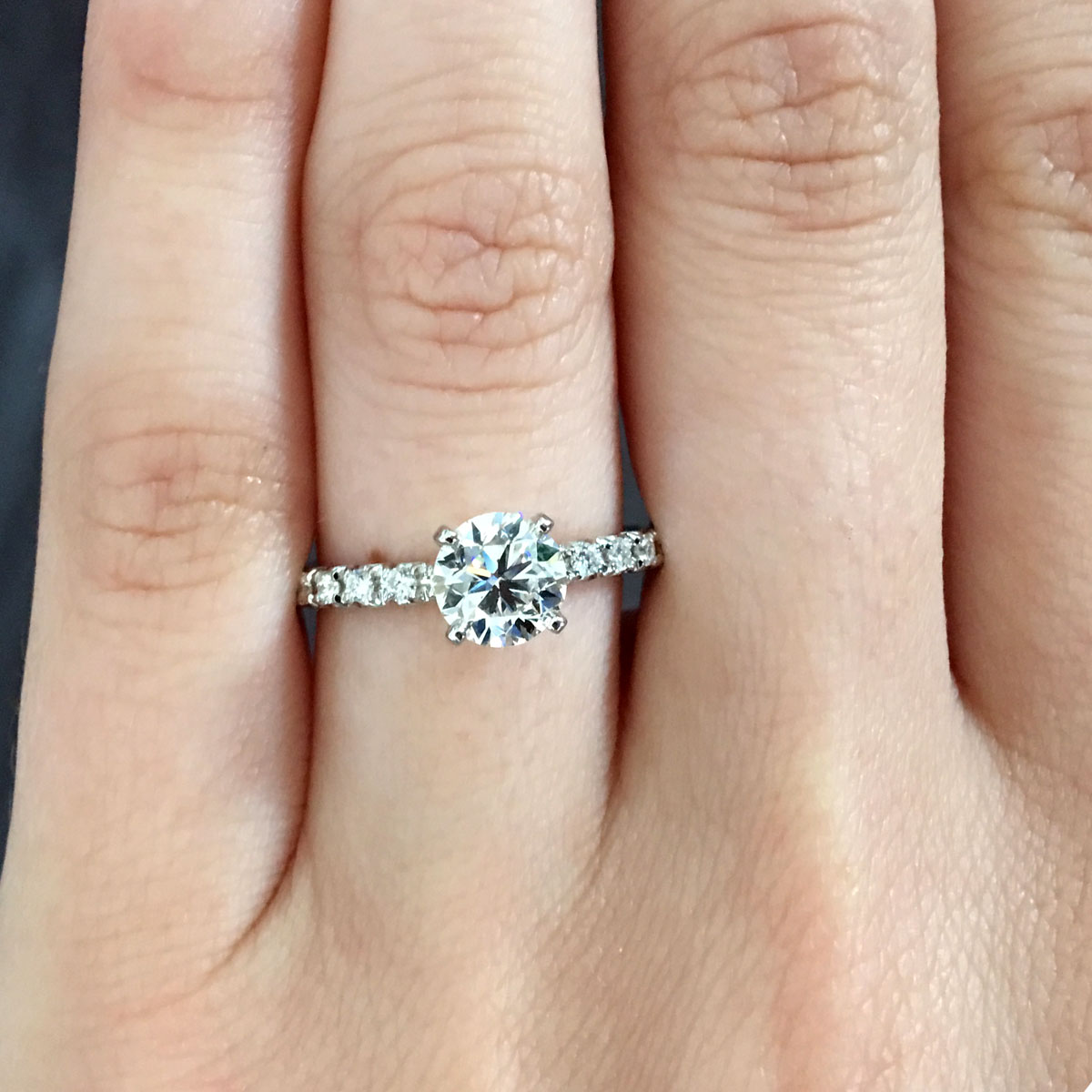
A brilliant-cut diamond is a stunning, glittery, and shimmery cut. It is one of the most basic and classic cut styles. The cut of the shape allows for a good deal of light refraction. This is what creates the glimmer and shine of the finished stone.
The cut uses kite-shaped and triangular cuts on the stone. The cuts spread out from the center of the stone. The classic and sophisticated cut shows the inner beauty of the stone.
While it is a simple cut, the look is incredibly luxurious and bright. The crown extends above the setting. The high crown is one of the defining features of the cut. This is a lovely style for something we wear daily, like an engagement ring. It creates a stunning, glittery look and the light will refract in all directions.
Step Cut
The step cut is another common type of gemstone cutting. The stone in this cut is rectangular. The cut uses rectangular facets. These rectangular cuts spread out from the crown of the stone and step down in layers.
This cut is highly popular. It creates a gorgeous finish for the stone. The cut brings out its natural beauty. This cut isn’t as bright or shiny as the brilliant-cut. This, however, means it doesn’t refract light in the same way. This creates a subtle gleam that isn’t as glittery as the brilliant-cut.
There are different types of step cuts. The most popular are the emerald and baguette cuts. These cuts are rectangular in shape and don’t have as high of a crown as the brilliant-cut stone. For someone who wants subtle and understated elegance, this is a great option. The cut will help you achieve a put-together look, but it is also simple enough for daily wear.
Mixed Cuts
A mixed cut diamond is, as the name implies, uses cuts from the brilliant and step cuts. This creates truly unique gemstones. It is a versatile cut that is used to create stunning pieces of jewelry. This cut is versatile. It is used to create stunning pieces of jewelry.
Most mixed-cut stones have brilliant cuts on the crown of the stone. The pavilion of the stone uses step cuts. You can reverse these techniques to create a unique look and feel. You can create a truly stunning stone through the use of cabbing and faceting techniques as well.
These stones use a myriad of different types of cuts to create unique shape and style combinations that are different from the classic cuts.
Rose Cut
Dating back to the 16th century, the rose cut is a classic style. This isn’t a standard or common cutting method, but it creates a stunning and unique result. The cut features a round shape with a cabbed base. There are facets on the top of the stone.
Another method that can be used in the rose cut is a faceted pavilion and a domed crown. This is a pretty uncommon way to cut a stone, but it isn’t unheard of.
Triangular cuts are used to create the raised look of the crown that the rose cut is known for. The shape is almost always round but may vary with more specialty cutters. The number of facets varies, depedning on the particular stone and its size.
The vintage look of this cut gives it a classic look and feel. Though it uses facets that cause tricks of light, it doesn’t shine as bright as the brilliant-cut diamond.
Briolette Cut
The briolette cut dates back to Victorian times. This is a well-known vintage cut. Briolette cut is a faceted, pear-shaped stone. The result of this cut can look like a double rose-cut stone. This cut is popular in necklaces, bracelets, and even rings. This cut isn’t used as often in modern times. It has a vintage look and feel and is popular among crowds who like this look.
Ceylon Cut
The Ceylon cut is an ancient technique. There are different answers for the birth of this cutting style. What we do know is that Sri Lankan jewelers still use this cut to this day. The stone will feature a brilliant-cut crown and a step-cut pavilion. This creates a truly glittery and brilliant stone that will glimmer and shine.
Barion Cut
Barion cut stones are mixed-cut stones. But the look and shape are so unique that it has become a category all its own. The shape of the stone will vary. It may be round or even triangular. Most barion cut stones use a round brilliant pavilion and a step-cut crown.
The result is an incredibly shiny and glimmery stone. Jewelers will use a range of different types of cuts on the crown and pavilion. The feature that defines all barion cut stones is the use of quarter moon facets beneath the girdle of the stone.
The center of the stone features a cross-shaped pattern that gives the stone a depth that other cuts don’t have. The barion cut uses deeper cuts than most other cuts. This helps to concentrate the color of the stone. Bringing out its natural luxury.
Modified Cuts
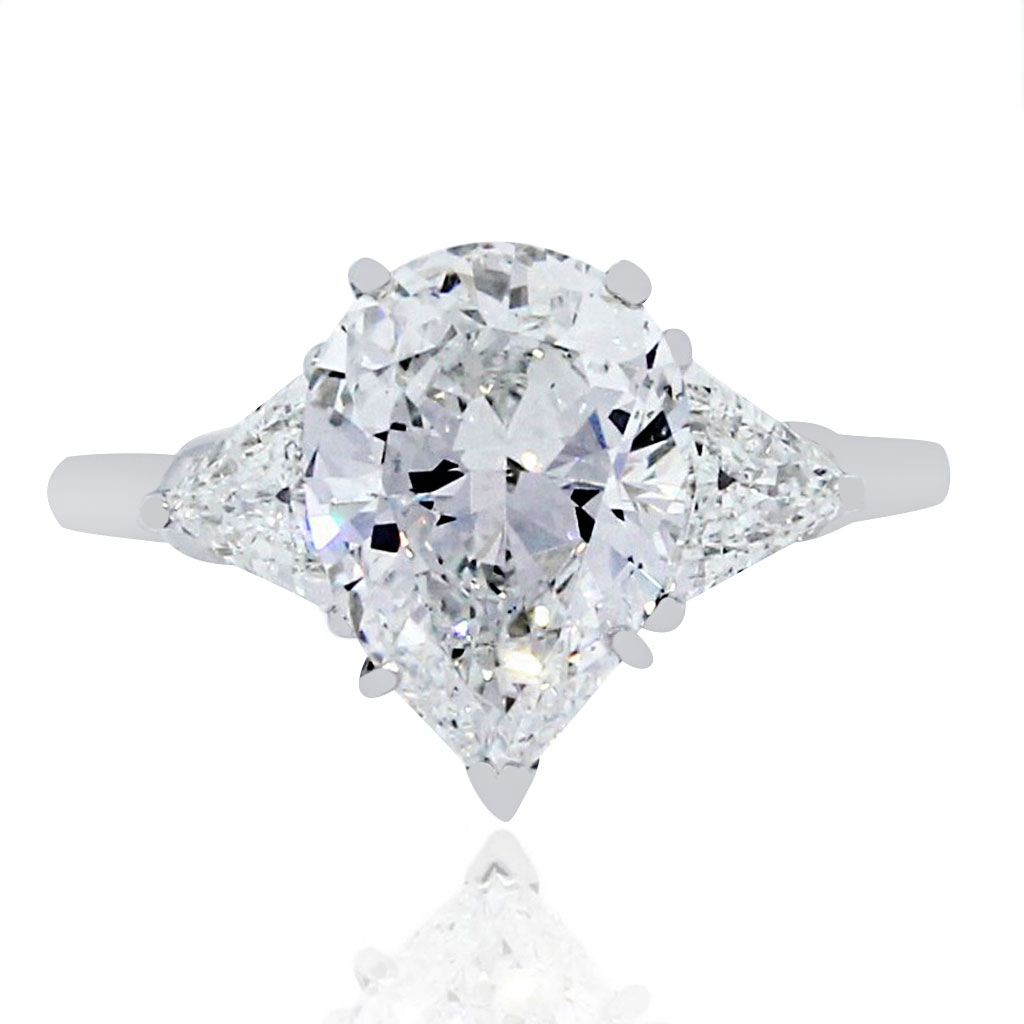
Jewelers have free range to use any combination of cuts to create truly unique shapes and looks. These modified cuts may even use the same shapes and faceting techniques but in different configurations that create amazing and unique looks.
Modified must be added to the name of any stone cut in a manner that is outside the standards agreed upon by trade organizations. The Barion, given its own category, is an exception. Any stone utilizing the brilliant style will be called brilliant. Step style rings will have more specific names, such as Asscher cut.
Named Cuts
There is almost no limit to the ways you can cut a gemstone to create a truly unique-looking piece of jewelry. Gem cutters create new techniques and styles regularly. They have an idea and try it out and see if it works. Sometimes it does. Sometimes it doesn’t.
New cuts are typically named in a way that describes the look and feel of the stone. These creative cuts are at the forefront of innovation. Some styles of named cuts include the checkerboard style, the divine cut, and the snowflake cut. Another popular named cut is the Portuguese. It is highly labor-intensive and takes a great deal of technique to properly execute.
These different cuts create different levels of light refraction. They have different levels of brilliance and shine. Some styles bring out the inner color and luster of the stone. Typically, we only name the most popular cuts that are replicated in various places.
No Name Cuts
Not all cuts end up with a name. This doesn’t mean they are gorgeous, unique, and stunning cuts. Some gem cutters work more with feel than tradition. What does the stone need to bring out its natural beauty? Whatever that is, that’s what the cutter will do. This leads to truly unique cuts that don’t have a name.
Advances in computer programming have allowed gem cutters to try different things without ever touching a stone. This allows gem cutters to create brand new cuts that are one-of-a-kind. The programs allow cutters to see what the cut will look like and whether or not it works.
While most no-name cuts are variations on standard cuts, they don’t follow convention and thus cannot be called a standard cut. New cuts of stones are created every day. This is because the ways in which a stone can be cut are nearly unlimited. Many cuts are never named. Ones that catch the eye of other cutters may eventually become named cuts.
In Closing
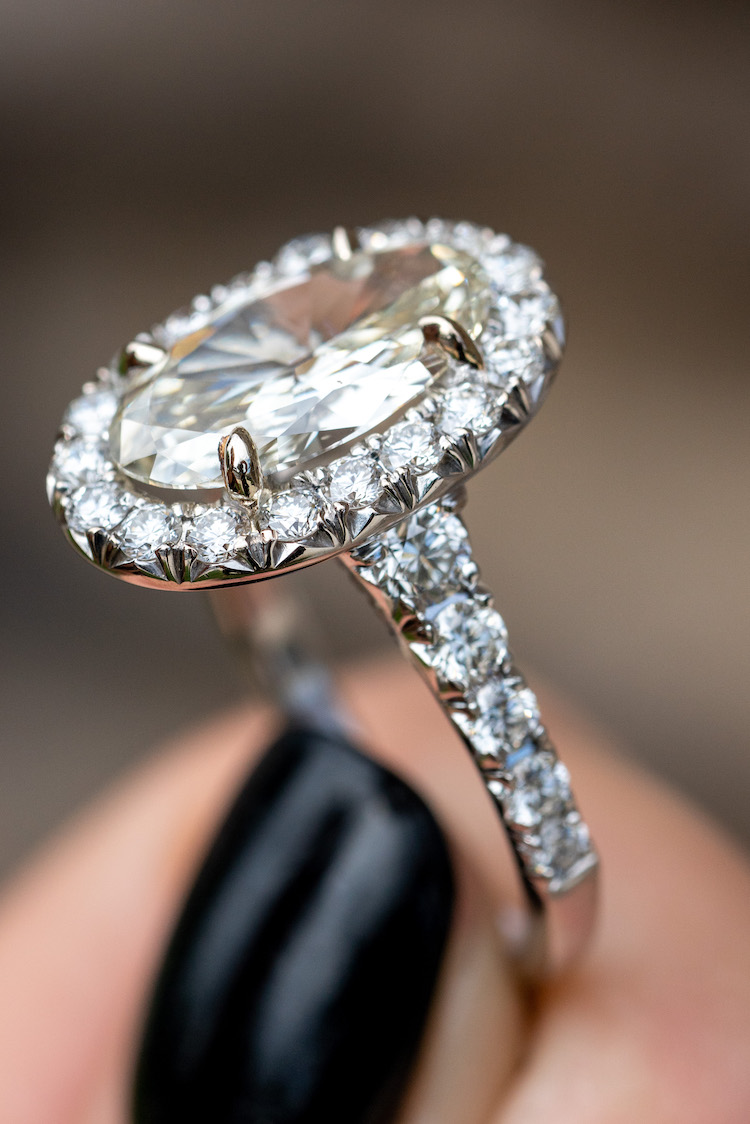
Whether you are buying a wedding ring or simply a stunning necklace or bracelet, having a basic understanding of the different cuts will help you make the best possible decision. Most people don’t realize just how many different cuts are used on gemstones. This is especially true for diamonds. Being the hardest stone on the planet, they can be worked in any number of ways creating a wide range of possibilities for the stone. Other stones are more limited due to their softness.
The most basic styles used to cut stones are brilliant, step, and mixed cuts. The use of facets of different shapes and in different configurations creates a whole range of different styles. Some of the cuts are designed to bring out the inner color and luster of the stone. Other cuts are designed to refract as much light as possible, to create a glittery shiny stone that will sparkle and dance in the sunlight.
The Sky is the Limit
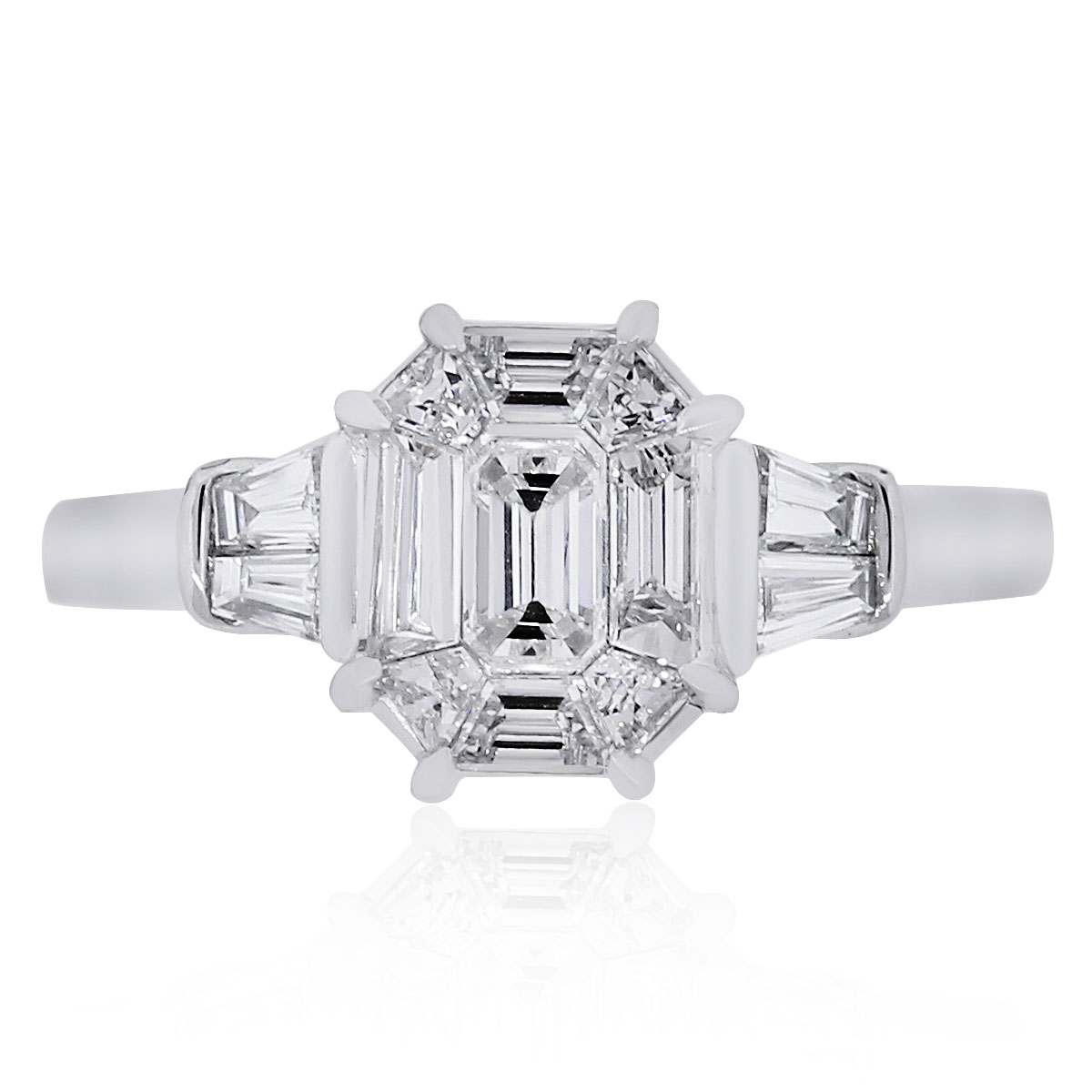
Different cuts bring out different aspects of a stone. Some use a raised crown, while others use a domed or flat crown. Some are worked in a rounded or rectangular shape. However, some gem cutters pride themselves on creating truly unique and one-of-a-kind creations. This leads to a huge range of specialty cuts, some of which never even get a name.
Vintage cuts or modern cuts both have their uses. Computer software tools have expanded what is possible. They allow a gem cutter to try something out digitally, before actually working with a stone. This allows them to see what works and what doesn’t. It gives them an idea of what the finished stone will look like. Many bad ideas are scrapped before they ever even reach an actual stone.
However, innovation and software like this have also spurned the creation of stunning, unique cuts that are unmatched in sparkle and beauty. No-name cuts, when presented to the right people, can become named cuts. You never know if the unique cut of your wedding ring will become the fashion craze of the future.
The sky is the limit when it comes to different shapes and styles of gemstone cuts. Whether you want something that is classic and simple to wear daily or a statement piece, there are tons of different cuts to choose from. The brave or fashion-forward may request a brand new style and have a piece so unique that it is truly one-of-a-kind and can’t be matched. Whatever cut you choose, make sure you pick one that will fit the needs of the piece of jewelry. You can take risks with a statement piece that is only meant to be worn on special occasions. You might want to choose something more classic for daily wear.
Ten articles before and after
BEST EMERALD CUT ENGAGEMENT RING IDEAS FOR THE PERFECT BRIDE – Diamonds By Raymond Lee
MINIMALISTIC WEDDING RING IDEAS FOR THE COOL BRIDE – Diamonds By Raymond Lee
Stand Out with Uniquely Shaped Diamond Rings – Diamonds By Raymond Lee
SIMPLE AND CLASSY: BEST ASSCHER CUT ENGAGEMENT RINGS – Diamonds By Raymond Lee
The Incomparable Pave Diamond – Diamonds By Raymond Lee
Unique Alternatives to Diamonds in Engagement Rings – Diamonds By Raymond Lee
TOUGHEST WATCHES: RICHARD MILLE VS PATEK PHILIPPE – Diamonds By Raymond Lee
Show Your Style with a Platinum Ring – Diamonds By Raymond Lee
BEST PANERAI WATCH TO COLLECT: PANERAI LUMINOR MARINA AUTOMATIC – Diamonds By Raymond Lee
HUGE ONE-OF-A-KIND PAVE COCKTAIL RINGS – Diamonds By Raymond Lee
